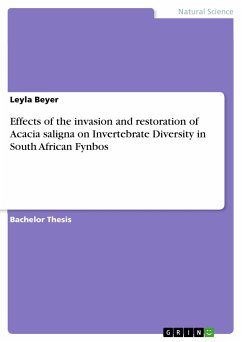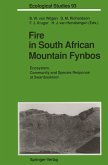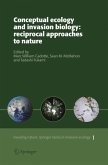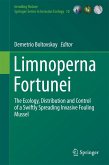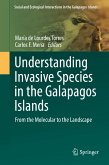Bachelor Thesis from the year 2021 in the subject Biology - Ecology, grade: 1,1, Free University of Berlin (Biologie - Ecological Novelty), language: English, abstract: The invasive plant Acacia saligna (Labill.) Wendl., from here on referred to only as 'Acacia', is widespread in the Cape Floristic Region, a global biodiversity hotspot in South Africa, with stark impacts on diversity. The goal of this study was to obtain a comprehensive estimation of the effect of the invasive alien plant Acacia saligna and its clearing on invertebrate diversity in Cape Flat Sand Fynbos. In three selected areas of the region, invertebrates were collected with pitfall traps and their diversity compared among uninvaded reference sites, cleared sites, and Acacia-invaded sites. Most past studies focus on the plant response to the invasion of Acacia saligna. Conversely, this thesis aims to fill the gaps in knowledge by focusing specifically on the impacts of the Acacia invasion and clearing on invertebrates in Cape Flat Sand Fynbos. To understand the influences on invertebrates this study investigated the variation in invertebrate diversity and composition among Acacia saligna invaded sites, and subsequently cleared sites, in comparison with uninvaded Fynbos sites. My objectives were to: (1) Identify the diversity of the invertebrate orders in the areas selected (2) and to assess how the invertebrate diversity in Fynbos is influenced by the invasion and clearing of the Acacia; (3) Analyze similarities and differences in invertebrate composition among the different sampling sites and status; (4) Analyze if a selection of the orders sampled individually respond differently to the invasion and clearing of Acacia in contrast to the overall invertebrate response; (5) Investigate correlations between the invertebrate diversity and plant diversity response to the invasion of Acacia.
Dieser Download kann aus rechtlichen Gründen nur mit Rechnungsadresse in A, B, BG, CY, CZ, D, DK, EW, E, FIN, F, GR, HR, H, IRL, I, LT, L, LR, M, NL, PL, P, R, S, SLO, SK ausgeliefert werden.

